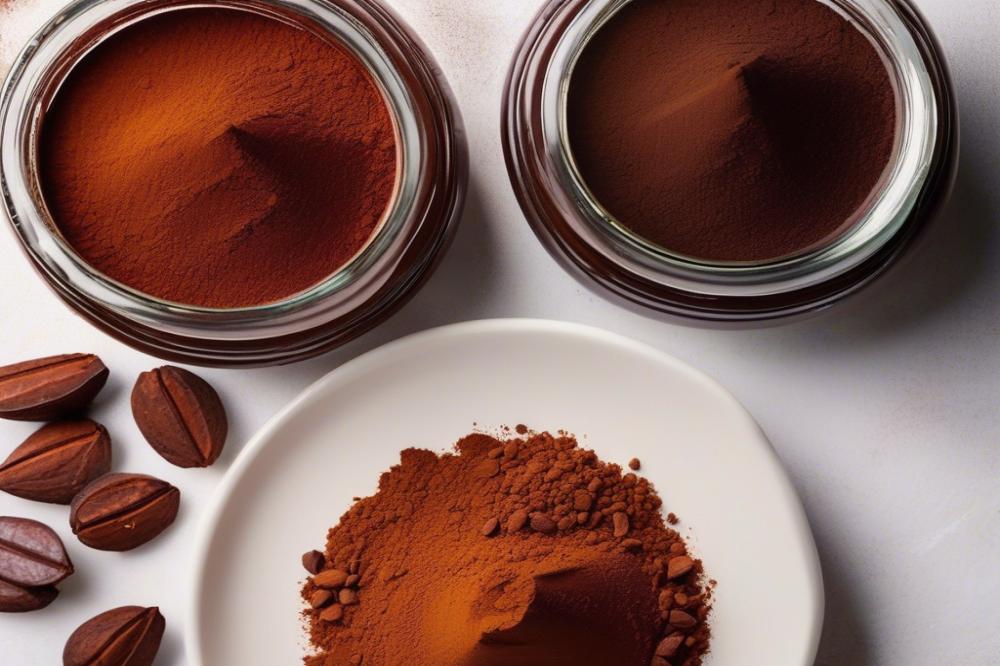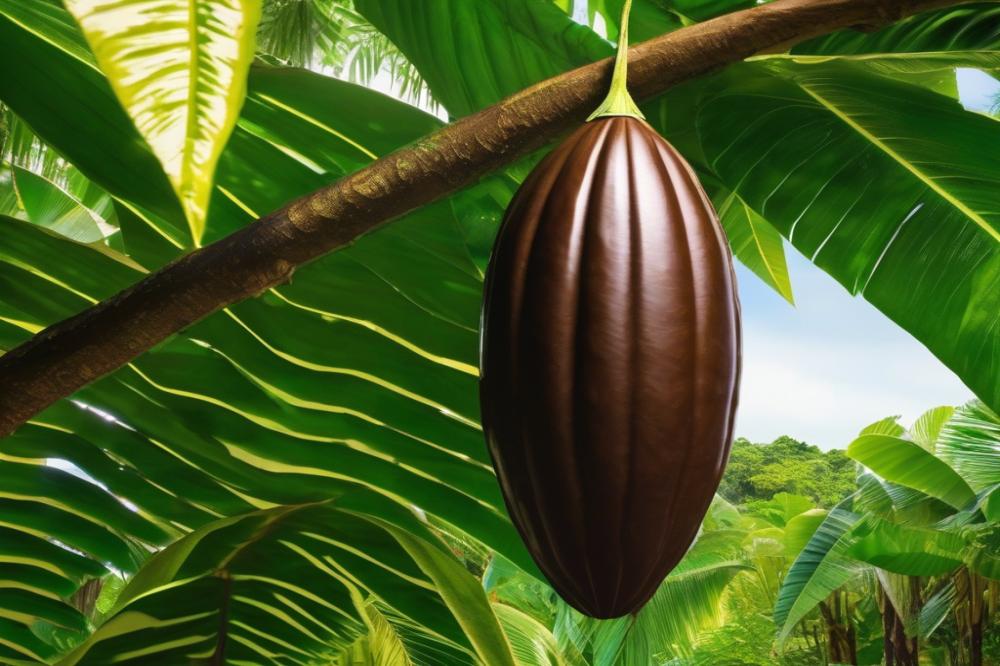Understanding Cocoa and chocolate
The world of cocoa and chocolate is rich and fascinating. It plays an essential role in countless recipes and desserts enjoyed by many. Chocolate is beloved for its sweet and indulgent flavors, which often come from cocoa products. However, two terms often arise in the kitchen: Cocoa Powder and Cacao Powder. At first glance, they may seem interchangeable, but they hold distinct differences that can affect everything from nutrition to baking results.
Why Distinguishing Between Cocoa Powder and Cacao Powder Matters
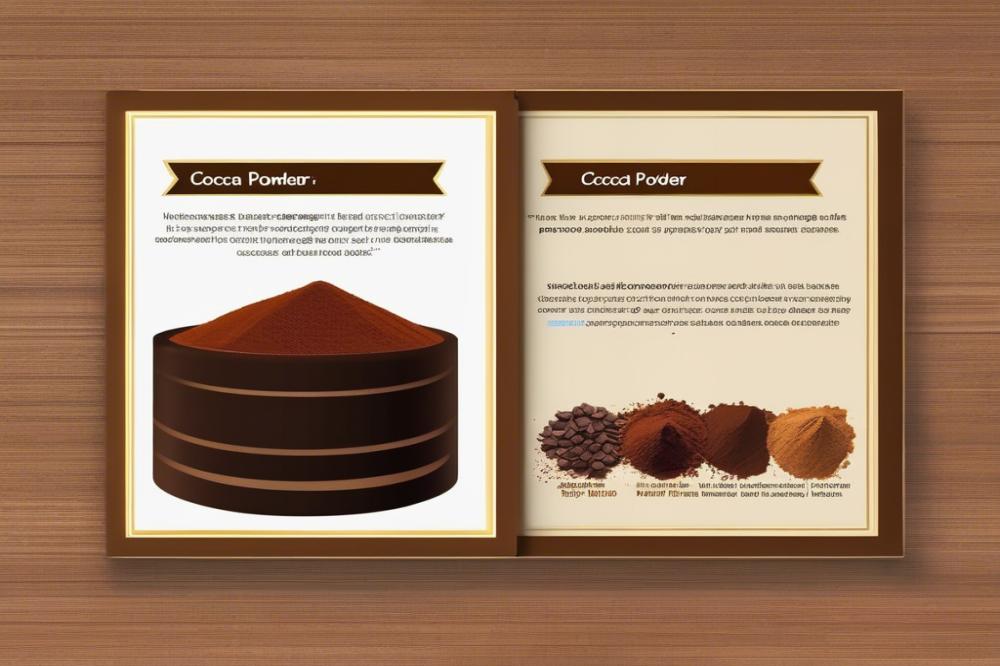
Grasping the differences between these two powders is important for anyone who loves to cook or bake. Their processing methods vary significantly. While cocoa powder is made through a high-heat process, cacao powder undergoes minimal processing. This difference impacts not only flavor profiles but also nutrition and health benefits. Knowing these distinctions can guide your choices in recipes and help you make healthier substitutions.
The Purpose of This Article
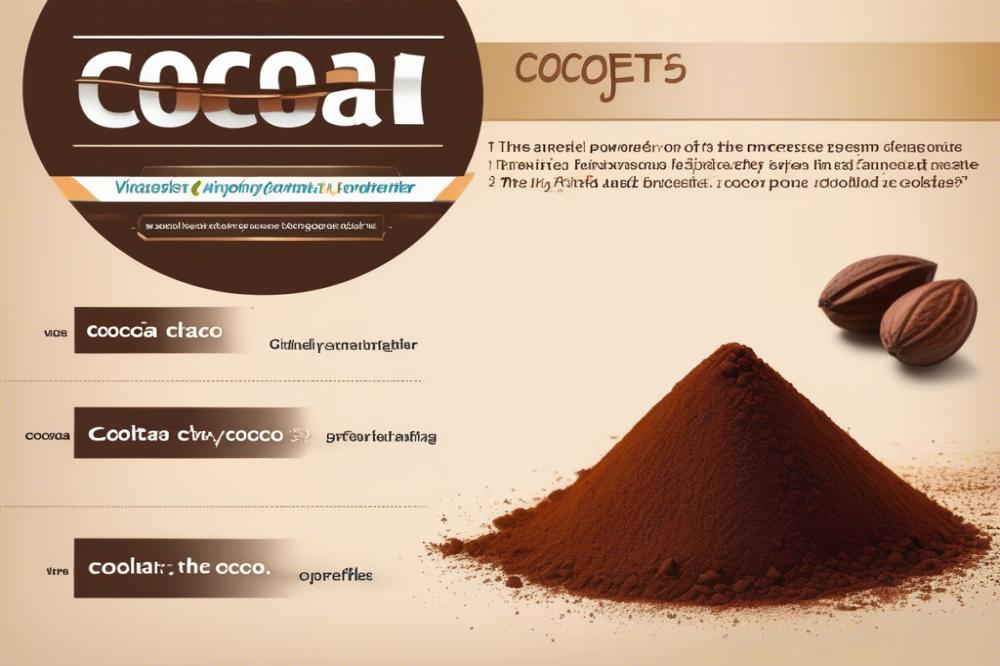
This article will dissect the key differences between cocoa powder and cacao powder. It will explore their respective health benefits, processing techniques, and uses in various recipes. Additionally, we’ll delve into their antioxidant properties and nutritional values, so you can understand which one suits your needs best. By the end, you will feel confident in making informed decisions for your baking adventures.
Cocoa Powder: An Overview
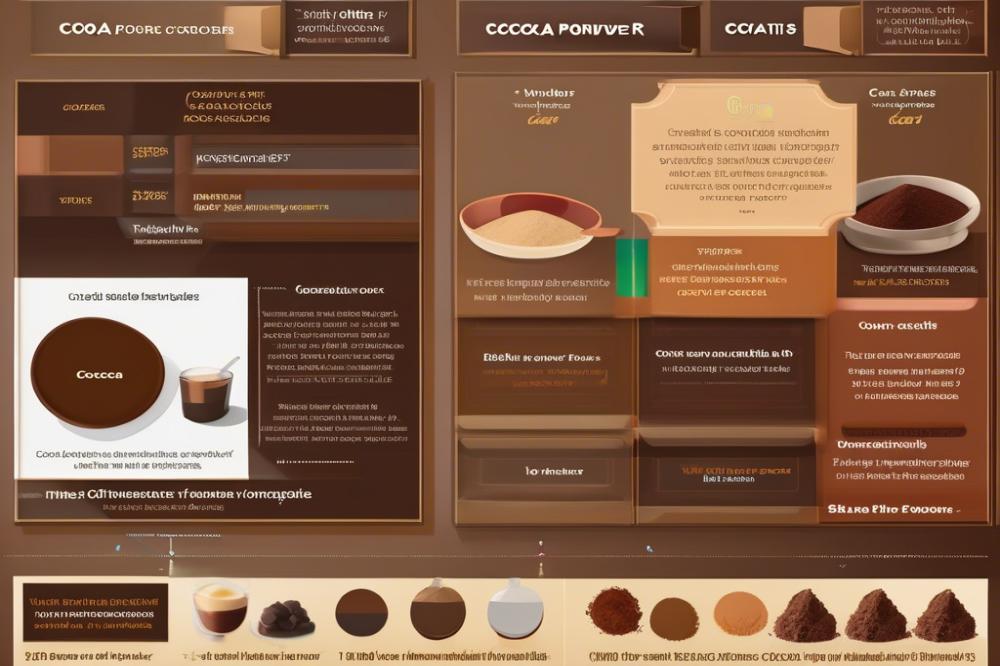
Cocoa powder comes from cacao beans. These beans are derived from the cacao tree, native to Central and South America. After harvesting, they undergo a series of processing methods. Fermentation, drying, and roasting are crucial steps. This processing creates the beloved chocolate flavor we enjoy.
Once fermented and dried, the beans are roasted to develop their rich taste. The beans are then ground into a paste, known as cocoa mass. Oil is extracted from this paste to create cocoa butter. What remains is the cocoa powder. This powder becomes a staple in many kitchens.
Nutritionally, the powder is packed with various health benefits. It contains essential nutrients like magnesium, iron, and fiber. Antioxidants present in cocoa powder can help protect the body from oxidative stress. These compounds may also support heart health. Choosing cocoa powder might add a nutritious boost to your diet.
Role of Cocoa Powder in Baking and Cooking
In baking, this ingredient plays a significant role. It can add depth to chocolate cakes and cookies. Recipes often depend on its rich flavor to balance sweetness. Many chefs consider it a key element in brownies and mousses. Besides desserts, it can enhance savory dishes as well.
Flavor profiles can vary with different products. Some powders are intense and dark, while others are milder. Not all cocoa powders are created equal. Choosing the right type can affect the outcome of your dish. For those looking for a healthier option, using cocoa powder offers a great chocolate flavor with fewer calories.
Substitution offers another layer of flexibility in cooking. If you’re out of cacao because recipes often call for it, cocoa can step in. The differences in taste are usually minimal, depending on whether it’s Dutch-processed or natural cocoa. Understanding these nuances can improve your culinary skills.
Cacao Powder: An Overview
Definition and Origin of Cacao Powder
Cacao powder comes from the seeds of the cacao tree, known scientifically as Theobroma cacao. This tree grows primarily in tropical regions. It has a rich history that dates back thousands of years. Ancient civilizations, such as the Aztecs and Maya, valued cacao for both its flavor and its cultural significance. They even used cacao beans as currency!
Processing Methods for Cacao Powder
Processing cacao into powder involves several steps. First, the beans are harvested and fermented. Fermentation is crucial; it develops the beans’ flavor. Afterward, the fermented beans are dried and roasted. The roasting process enhances their rich chocolate taste. Once roasted, the outer shells are removed. The remaining cacao nibs are then ground into a thick paste. Finally, this paste is pressed to separate the cacao butter from the solid cacao mass, which is then ground to form cacao powder. This method preserves more nutrients than traditional cocoa powder processing.
Nutritional Profile and Health Benefits
Nutritionally speaking, cacao powder is a powerhouse. It is rich in antioxidants, which help fight free radicals in the body. Those antioxidants can support heart health and improve overall wellness. Additionally, cacao contains essential minerals like magnesium, iron, and calcium. Many people also love its potential benefits for mood enhancement, thanks to compounds that can boost serotonin levels. Including cacao powder in your diet can be a smart choice for those seeking a natural way to support their health.
Comparison with Cocoa Powder in Recipes
When it comes to recipes, cacao powder and cocoa powder can sometimes serve as substitutes for each other. However, their flavor profiles differ. Cacao powder is more bitter and less sweet than cocoa powder. This bitterness can lend a deeper chocolate essence to baked goods or smoothies. Some recipes call for specific types, so knowing the differences is essential. For example, if you choose to substitute cacao for cocoa in brownies, consider adjusting the sugar levels to balance the flavors. Users often appreciate the added nutrients from cacao, accompanying their delicious creations with health benefits.
Key Differences Between Cocoa Powder and Cacao Powder
Processing Methods: Roasting vs. Raw
Cocoa powder and cacao powder start from the same plant, but their processing methods are markedly different. Cacao powder is made from raw cacao beans. These beans undergo minimal processing. They are cold-pressed to preserve nutrients. This helps retain the health benefits found in cacao. On the other hand, cocoa powder comes from roasted beans. High heat is used during the roasting process. This can strip away some of the nutrients but enhances the flavor.
Flavor Profiles and Uses in Chocolate and Desserts
Flavor profiles for these two powders differ significantly. Cacao powder tends to have a more intense, fruity flavor. It can bring depth to recipes, making it ideal for health-focused dishes. In contrast, cocoa powder has a milder taste with stronger chocolate notes. Many bakers prefer it for classic chocolate recipes, such as brownies and cakes. Using cacao in a dessert will provide a different experience compared to cocoa. Substituting one for the other may change the overall flavor of your dish.
Antioxidant Levels and Health Impacts
When considering health benefits, cacao often comes out on top. Antioxidant levels are notably higher in cacao powder. These antioxidants can help combat oxidative stress in the body. Research suggests that cacao may improve heart health and boost mood. Cocoa powder, while still beneficial, doesn’t have quite the same potency. This difference can influence your choice depending on health goals. If antioxidants are a priority, reaching for cacao powder might be the better option.
Nutrition Comparisons
Nutrition numbers reveal some interesting contrasts as well. Cacao powder typically contains more fiber, iron, and magnesium. These nutrients support various bodily functions. Cocoa powder, while still nutritious, may have lower amounts of these beneficial components. Caloric content can differ as well, depending on how the powder is processed. Always read labels carefully to understand what you’re consuming. Choosing the right powder affects not just flavor but overall nutrition in recipes.
Substitution in Recipes
Choosing between cocoa powder and cacao powder in recipes often depends on what you’re trying to achieve. Cacao powder has more health benefits since it retains more nutrients. This includes higher levels of antioxidants. It’s a great option for those looking to add a nutritional punch to their dishes. Cocoa powder, processed at higher temperatures, tends to provide a smoother chocolate flavor.
When to Use Cocoa Powder and When to Use Cacao Powder
If a recipe calls for cocoa powder, it’s usually for baked goods. Brownies, cakes, and cookies benefit from its rich flavor. On the other hand, cacao powder works well in smoothies or raw desserts where you want the original taste of chocolate to shine. It’s perfect for those who prefer a less processed option. Use cacao in recipes like energy balls or raw chocolate bars for the best results.
Tips for Substitution in Baking and Cooking
Substituting one for the other is possible but requires some adjustments. When using cacao powder in place of cocoa powder, increase the sugar slightly. Since cacao is more bitter, this balances the sweetness in your treat. A 1:1 ratio often works, but taste testing is key. Remember that cacao powder may alter the color and texture of certain recipes, especially those baked at high temperatures.
Examples of Recipes for Both Powders
Try a classic chocolate cake for cocoa. The rich, moist texture along with a deep chocolate flavor will delight anyone. If you want to go with cacao, a raw chocolate mousse is a great choice. Its intense flavor comes from the natural ingredients and avoids heat processing. Smoothies are also versatile. Adding cacao can make your morning blend rich and nutritious.
In conclusion, knowing how to substitute and when to use each type enhances your cooking experience. Whether you reach for cacao or cocoa, both have their place in the kitchen. Equal parts, along with a pinch of attention, can lead to delicious outcomes. Embrace the differences and enjoy experimenting!
Health Benefits of Cocoa Powder and Cacao Powder
For those who are curious about health benefits, differences exist between cocoa powder and cacao powder. Cacao powder, made from raw cacao beans, retains more nutrients than its processed counterpart. It is packed with antioxidants, which can help combat oxidative stress in the body. These compounds play a vital role in reducing inflammation and protecting cells from damage.
Cocoa powder, on the other hand, undergoes a heating process that can diminish some of these beneficial properties. Yet, it still offers noteworthy health advantages. Antioxidants found in cocoa can lower blood pressure, improve heart health, and may even enhance brain function. Such benefits make both powders worthy of consideration for those looking to improve their overall diet.
In addition to nutritional values, the flavor profiles vary. Cacao has a more intense, bitter taste, while cocoa typically provides a smoother, sweeter flavor. This might influence which one you choose for recipes. For instance, when baking chocolate treats, either option can work, depending on your desired taste. However, if you’re aiming for richer flavors, cacao is an excellent choice.
When discussing substitution, remember that using cacao powder in place of cocoa might change the flavor slightly. This could lead to unique outcomes in baking and cooking. A simple recipe may transform with a different texture or taste. Experimentation often reveals delightful surprises.
Incorporating either powder into your diet can have substantial implications for health. Adding cacao to smoothies can deliver a nutrient boost while maintaining deliciousness. You can sprinkle cocoa over oatmeal for extra flavor. Such simple changes can contribute positively to your wellness journey.
Ultimately, understanding these processing methods can help you make informed choices. The nutritional benefits of each product vary due to their preparation. Use them wisely to maximize health benefits while enjoying their delightful chocolatey flavors.
Final Thoughts on Cocoa Powder and Cacao Powder
Recapping the main points, it’s clear that cocoa powder and cacao powder have distinct characteristics. While both come from the cacao bean, they differ in processing and nutritional value. Cocoa, often processed at high temperatures, can lose some of its antioxidants. Cacao, on the other hand, is raw and retains more of its natural health benefits.
When choosing between the two, consider your needs and preferences. If you’re looking for a rich chocolate flavor without too much bitterness, cocoa might be your go-to. However, for those who value nutrient retention and a more intense taste, cacao could be the better choice. Understanding the differences can help you make a more informed decision for your cooking and baking.
No matter which you choose, both options can add depth to your recipes. Don’t hesitate to explore the unique qualities each has to offer. Experimenting in the kitchen with both can lead to delightful surprises. Whether you’re making a rich chocolate cake or a smooth smoothie, there’s a place for both cocoa and cacao. So get inspired and create – your taste buds will thank you!

